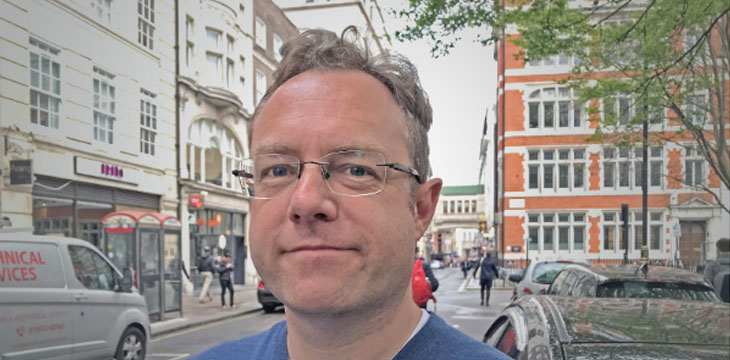|
Getting your Trinity Audio player ready...
|
Mark Allison has been a freelance IT consultant for 20 years, specialising in data. He works for investment banks, retailers, insurance companies, hedge funds and payment processors. Many of the people he deals with are sceptical about Bitcoin—and have been more so since the crash in its value last year.
But Mark is optimistic about Bitcoin’s prospects and has been following the sector closely. Now he’s spending his evenings and weekends building products for Bitcoin SV (BSV).
“I see huge potential,” he says. Bitcoin could allow governments and banks to be more transparent. “If we do move over to Bitcoin as a currency …I think everyone’s going to be better off.”
He understands the scepticism among his City and IT colleagues: “because BTC [Bitcoin Core] has these limits in place, it couldn’t scale, so people who did go out and buy Bitcoin and try to use it, were like, ‘well, it’s not actually very good, is it?’.” With transaction fees rising to around $50, its prospects for being used as a global cash seemed “ridiculous.”
But Mark says the limits on transactions and high fees were artificial and the appearance of Bitcoin SV (BSV) has given him even more hope because it returns to the ideas of the original Bitcoin White Paper, of which Mark is a huge fan:
“When you consider Bitcoin as a whole, I see it like a Michelangelo painting: it’s a thing of beauty. If you look at the economics behind it, all the incentives behind it—how the miners are incentivised—if you look at the computer science breakthrough that happened to solve the Byzantine Generals problem, if you look at the game theory behind it, if you look at the law: all of these elements all come together in one package, and it’s just a beautiful thing.”
The developers at nChain are removing many of the limits imposed on BTC, and then “Bitcoin can really realise its potential.” It will make business more efficient by reducing their costs. All it will take it one large business to start using it.
The first big users of Bitcoin may turn out to be supply chain companies or payment processors, Mark believes. Converting to the blockchain would allow them to dispense with data centres full of servers. As for private blockchains, Mark believes “the whole point of a blockchain is for it to be a public ledger.”
Dr Craig Wright, Jimmy Nguyen and others have spoken of the need to achieve massive scaling on the BSV network—and Mark agrees: “we need to scale now.” With the mining block subsidy being halved again next year in line with how Bitcoin was set up, eventually “if there’s not significant volume, then the miners are going to leave—so we’ve got this ticking time bomb”. The answer to that problem is BSV, Mark says. It’s not only a stable platform in terms of the protocol, but nChain is committed to scaling. “If we don’t scale, it’s going to fail,” Mark says. “We need to see consistent large blocks though real world usage” for instance for data that needs to be immutably stored with proof of existence.
Mark believes that will happen—and “I really would love to see everybody using Bitcoin …If we moved over from an inflationary model to a stable model, we’re going to be much wealthier because money’s not going to be abused any more.”
To help things along, Mark has been making his own applications for BSV. The first is a Chrome extension for the Handcash wallet. To make it, Mark had to teach himself Javascript, among other things, over two or three weekends. After about a month, he says, he “managed to cobble something together that kind of worked”. You can try the Handcash Handle Converter for yourself: it converts a Handcash handle into a Bitcoin address. Or, thanks to fellow developer Derek Moore, who made use of Mark’s open source project, you can get the same functions on a website, handcash.to.
Mark’s second project is an analytics database, SVCharts, which produces Bitcoin trends, such as mining fees: “ultimately what I want to have is a self-service analytics platform.” The project includes an interesting monetisation model using MoneyButton.
You can watch the whole interview with Mark Allison on YouTube or listen on this week’s CoinGeek Conversations podcast:
Please subscribe to CoinGeek Conversations – this is episode 14 of a weekly podcast series. Just search for “CoinGeek Conversations” wherever you get your podcasts, subscribe on iTunes, listen on Spotify or visit the CoinGeek Conversations website.
https://youtu.be/gBb9FSxfyVs

 01-07-2026
01-07-2026 




